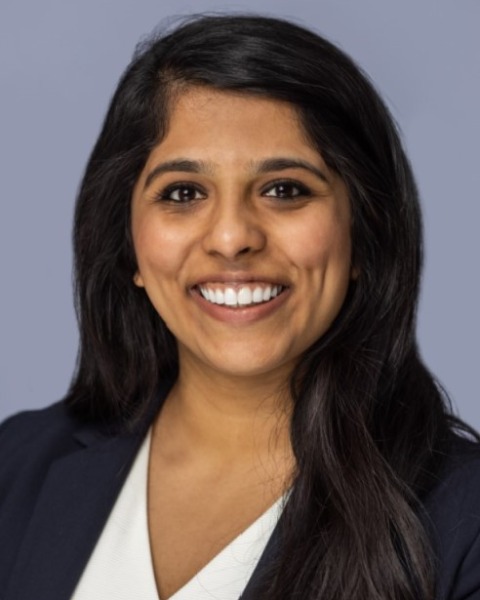Back
Poster Session A - Sunday Afternoon
A0073 - Post-Covid Cholangiopathy: An Emerging Complication of COVID-19 Infection
Sunday, October 23, 2022
5:00 PM – 7:00 PM ET
Location: Crown Ballroom

Anupama Ancha, MD
Baylor Scott and White Medical Center
Temple, TX
Presenting Author(s)
Anupama Ancha, MD1, Apurva Modi, MD2
1Baylor Scott and White Medical Center, Temple, TX; 2Baylor Scott & White Liver Consultants of Texas, Fort Worth, TX
Introduction: Post-COVID-19 Cholangiopathy is an emerging sequela of the coronavirus infection. Cases have been reported of a secondary sclerosing cholangitis (SSC) type picture presenting insidiously in severe COVID patients.
Case Description/Methods: A 45-year-old female, with recent COVID infection complicated by acute respiratory distress syndrome requiring intubation and tracheostomy, along with ECMO support and VRE and E. coli bacteremia, presented with abnormal liver function tests (LFTs). MRCP noted mild biliary dilation and intrahepatic biliary strictures. ERCP showed diffuse rarefaction of the left and right intrahepatic biliary branches. Acute hepatitis panel, HIV, and autoimmune work up including ANA, anti-smooth muscle antibody, and anti-mitochondrial antibody were negative. Subsequent liver biopsy showed minimal portal hepatitis with prominent bile duct injury and cholestasis with a few bile infarcts. Findings were consistent with SSC likely due to COVID. She was treated with Ursodiol with normalization of LFTs in 6 weeks. MRCP 10 months later demonstrated significant improvement in intrahepatic biliary strictures.
Discussion: Although the respiratory system is the primary target of COVID, involvement of the gastrointestinal system became evident with report of abdominal pain, nausea, vomiting, diarrhea and abnormal LFTs. Post-COVID cholangiopathy has emerged as a complication of the infection and has been characterized as a variant of secondary sclerosing cholangitis in critically ill patients (SSC-CIP). The persistence of cholestasis after recovery of other organ systems in SSC-CIP discriminates it from other hepatobiliary diseases.
In the setting of COVID-19, these symptoms persist after recovery from the infection itself indicating the irreversible nature of the damage. A case has been reported of end stage liver disease requiring liver transplantation after severe COVID. Direct viral damage to the biliary epithelium through ACE2 receptors, inflammatory mediators, pharmacologic therapy (antivirals, antibiotics, and glucocorticoids) used in COVID-19, direct cytotoxic effects, focal hypoxia, and hypercoagulable state in COVID infection have been implicated as pathways for hepatobiliary damage with predisposition to SSC-CIP. This case serves to highlight post-COVID cholangiopathy as a rare complication of severe infection and to emphasize the importance of work up of abnormal LFTs in the setting of COVID-19 infection.
Disclosures:
Anupama Ancha, MD1, Apurva Modi, MD2. A0073 - Post-Covid Cholangiopathy: An Emerging Complication of COVID-19 Infection, ACG 2022 Annual Scientific Meeting Abstracts. Charlotte, NC: American College of Gastroenterology.
1Baylor Scott and White Medical Center, Temple, TX; 2Baylor Scott & White Liver Consultants of Texas, Fort Worth, TX
Introduction: Post-COVID-19 Cholangiopathy is an emerging sequela of the coronavirus infection. Cases have been reported of a secondary sclerosing cholangitis (SSC) type picture presenting insidiously in severe COVID patients.
Case Description/Methods: A 45-year-old female, with recent COVID infection complicated by acute respiratory distress syndrome requiring intubation and tracheostomy, along with ECMO support and VRE and E. coli bacteremia, presented with abnormal liver function tests (LFTs). MRCP noted mild biliary dilation and intrahepatic biliary strictures. ERCP showed diffuse rarefaction of the left and right intrahepatic biliary branches. Acute hepatitis panel, HIV, and autoimmune work up including ANA, anti-smooth muscle antibody, and anti-mitochondrial antibody were negative. Subsequent liver biopsy showed minimal portal hepatitis with prominent bile duct injury and cholestasis with a few bile infarcts. Findings were consistent with SSC likely due to COVID. She was treated with Ursodiol with normalization of LFTs in 6 weeks. MRCP 10 months later demonstrated significant improvement in intrahepatic biliary strictures.
Discussion: Although the respiratory system is the primary target of COVID, involvement of the gastrointestinal system became evident with report of abdominal pain, nausea, vomiting, diarrhea and abnormal LFTs. Post-COVID cholangiopathy has emerged as a complication of the infection and has been characterized as a variant of secondary sclerosing cholangitis in critically ill patients (SSC-CIP). The persistence of cholestasis after recovery of other organ systems in SSC-CIP discriminates it from other hepatobiliary diseases.
In the setting of COVID-19, these symptoms persist after recovery from the infection itself indicating the irreversible nature of the damage. A case has been reported of end stage liver disease requiring liver transplantation after severe COVID. Direct viral damage to the biliary epithelium through ACE2 receptors, inflammatory mediators, pharmacologic therapy (antivirals, antibiotics, and glucocorticoids) used in COVID-19, direct cytotoxic effects, focal hypoxia, and hypercoagulable state in COVID infection have been implicated as pathways for hepatobiliary damage with predisposition to SSC-CIP. This case serves to highlight post-COVID cholangiopathy as a rare complication of severe infection and to emphasize the importance of work up of abnormal LFTs in the setting of COVID-19 infection.
Disclosures:
Anupama Ancha indicated no relevant financial relationships.
Apurva Modi indicated no relevant financial relationships.
Anupama Ancha, MD1, Apurva Modi, MD2. A0073 - Post-Covid Cholangiopathy: An Emerging Complication of COVID-19 Infection, ACG 2022 Annual Scientific Meeting Abstracts. Charlotte, NC: American College of Gastroenterology.
